Foreword
In 2019, Ping-Jung Chen's The Rest was selected for the 12th Young Star New Vision in Performing Arts grant. The performance was supposed to premiere in 2020 in Taipei, followed by a tour in central and southern Taiwan. Unfortunately, the COVID-19 pandemic hit Taiwan, forcing the premiere to be presented as three exclusive performances at the Experimental Theater of the National Theater and Concert Hall (NTCH) in Taipei with video recordings by PTS Arts. Then in 2021, Ping-Jung Chen scheduled for the play to return at Wellspring Theater, but a sudden worsening of the pandemic put Taiwan under level-3 alert and Taipei under lockdown. The rerun plan was forced to move the performance online, The Rest Under the Pandemic. It wasn't until 2022, when the pandemic gradually eased, that the play finally made its successful return at Wellspring Theater. The new iteration integrated content from the Experimental Theater and online stagings, becoming a new version of The Rest.
In the span of three years, The Rest experienced three major changes in time and space—an experience other theater productions are unlikely to have—and developed a unique production life cycle. This incredible journey must have brought considerable tumult to Ping-Jung's life and taught her a lot of lessons and insights, in turn affecting her creative attitude towards theater work. But when I (Shang-Ling Kuei) contacted Ping-Jung on behalf of the National Culture and Arts Foundation (NCAF) to talk about the content of this interview, Ping-Jung's first reaction was: "To be honest, I feel so empty, like I have nothing to say."
This answer piqued my curiosity, and after a long phone call clarifying Pin-Jung's inner thoughts, I sat down with her at her studio in Dadaocheng, ready to explore her ideas about working on The Rest over these years, and the production's subsequent impact on her. The interview started with Ping-Jung's statement that she has "nothing to say".
Wordless Emptiness
A cup of freshly-brewed tea in her hands, Ping-Jung slowly opened up about how one of the reasons she felt she had "nothing to say" was that creators are usually interviewed because of an upcoming show, and the purpose of these interviews is very clear: to talk about the production. But after completing three versions of The Rest, she currently has no plans to reprise it. As the main creator behind the play, she worries that attempting to talk about the show under these circumstances will cause her to say things that stray too far from the content of the work. "I have always felt that, rather than being 'the' creator, serving as the director of a production feels more like being a direct audience, one who understands the work best. So, I can respond from an audience's perspective, what this work and the team may have experienced, but it's hard to say what kind of person I have become as a result."
On the other hand, this "nothing-to-say-ness" is directly related to all the things Ping-Jung experienced during the three years of working on The Rest. After completing the Wellspring Theater version of The Rest with no incident, Ping-Jung felt a huge sense of "emptiness". This feeling of "emptiness" is akin to a child afraid of getting shots at clinics, who has waited in line until they are sitting in front the doctor, looking at the needle going into their skin. The needle only went in for a brief moment, and it was not painful at all, but this child has spent a much longer time resisting the idea of getting the shot, thereby undergoing much greater inner turmoil than the actual pain of the shot itself. The child goes from intense tension before the shot to relief after the shot in such a short period of time that they do not know how to describe their own feelings. Though there are many voices in their head, they are simply speechless. Ping-Jung said, "I can't define what happened (over these years), but at the same time, I feel safe because I completed these things. Everything that needed to be done was done." But once it's done, what next? Hidden behind this question is a deeper inquiry for her inner self that sucked Ping-Jung into a black hole of inner musings. Without a way to sort out the answer, the black hole remains in a state of chaos that she could only describe as “emptiness”.
But when, through this interview, Ping-Jung paused this inquiry into the depth of her inner self and looked back on all the things she experienced and achieved over the past three years, the chaos brought about by that “emptiness” started to clear gradually as she recalled the growth of The Rest.
The Twists and Turns of a Pilgrim's Journey
1. The Beginning of The Rest
The creation of The Rest began in 2019. Based on how contemporary society is awash with waves of capitalism, the play established six characters representing people who are commonly found in all corners of Taiwan but are often forgotten, outlining the things they encounter as they try to find a job as well as their inner thoughts and emotions. The six characters are: an older middle-aged man who has trouble finding purpose in life after retirement, a Vietnamese migrant bride who works in a nail salon, a young man who has returned from studying abroad and wants to find a job in Taiwan, an office girl living a monotonous life, and a nightclub hostess past her prime. The play features diverse forms of performance that include drama, sound, objects, music, and dance.
The Rest premiered at the Experimental Theater in 2020. Because a level-2 pandemic alert was in place, the production could not go on tour, and the audience could only view it through a 53-minute recorded version on PTS Arts. Afterwards, the production team prepared to re-stage the show at Wellspring Theater in 2021. Unfortunately, even the best laid plans go astray. The COVID-19 pandemic worsened until a level-3 alert was issued, all theaters were closed, and all performances had to be canceled or postponed.

The Rest was performed at NTCH's Experimental Theater in 2020. (Photo courtesy of: Ping-Jung Chen)
“It was a difficult and stressful time for everyone working in theater. We were all stuck at home without work, waiting to receive stimulus payments and for theaters to reopen, hoping for things to go ‘back to normal’. My mentality back then was that I had to fight. I was constantly thinking about how to break out of the situation. Surely we couldn’t just sit and wait for theaters to reopen?” Ping-Jung said, "I was deeply immersed in the play. When I couldn't sleep at night, I thought about how the characters in the play must also be suffering as the pandemic raged on. I didn't want to stop working on it. I constantly thought about how to break through the limitations of live theater. Since everyone was using virtual meetings to meet, I thought the format could reflect the reality of the moment." So, the production team began discussing how to create an online version of The Rest, marking the start of The Rest Under the Pandemic.
2. Out the Theater, Go Online
In The Rest Under the Pandemic, Ping-Jung and the rest of the team wove reality and fiction together as they strove to explore the possibilities of theater performance through online communication software. The structure of the story is this: Guided by a flight attendant, the audience boards a flight with the destination of "back to normal". The seven-day flight takes the audience to seven different spaces (the actual living environments of the actors), giving the audience a look at what the people in these spaces are going through. After seven days, the flight lands in the ending of "back to normal". Each day's flight revealed a different location. For example, on the fourth day, the audience was divided into different meeting rooms to watch the actors performing inside. If they wished to switch rooms, the audience could simply press a button to raise their hand and a member of the crew would provide assistance. On the sixth day, all the actors acted out the story of The Rest online. On the seventh day, the show came to a "back to normal" ending. While the flight attendant addresses the audience, the actors seize their chance to run outdoors, set up cameras on the street, and dance in front of the cameras. In the end, with footage of the actors dancing on screen interspersed with pre-recorded footage of them actually dancing in Dadaocheng Square, the plane lands at its destination. The whole process is like riding a plane. The audience could make themselves a drink, get some snacks, or cuddle with their pets as they experienced this magical, two-and-a-half-hour flight.
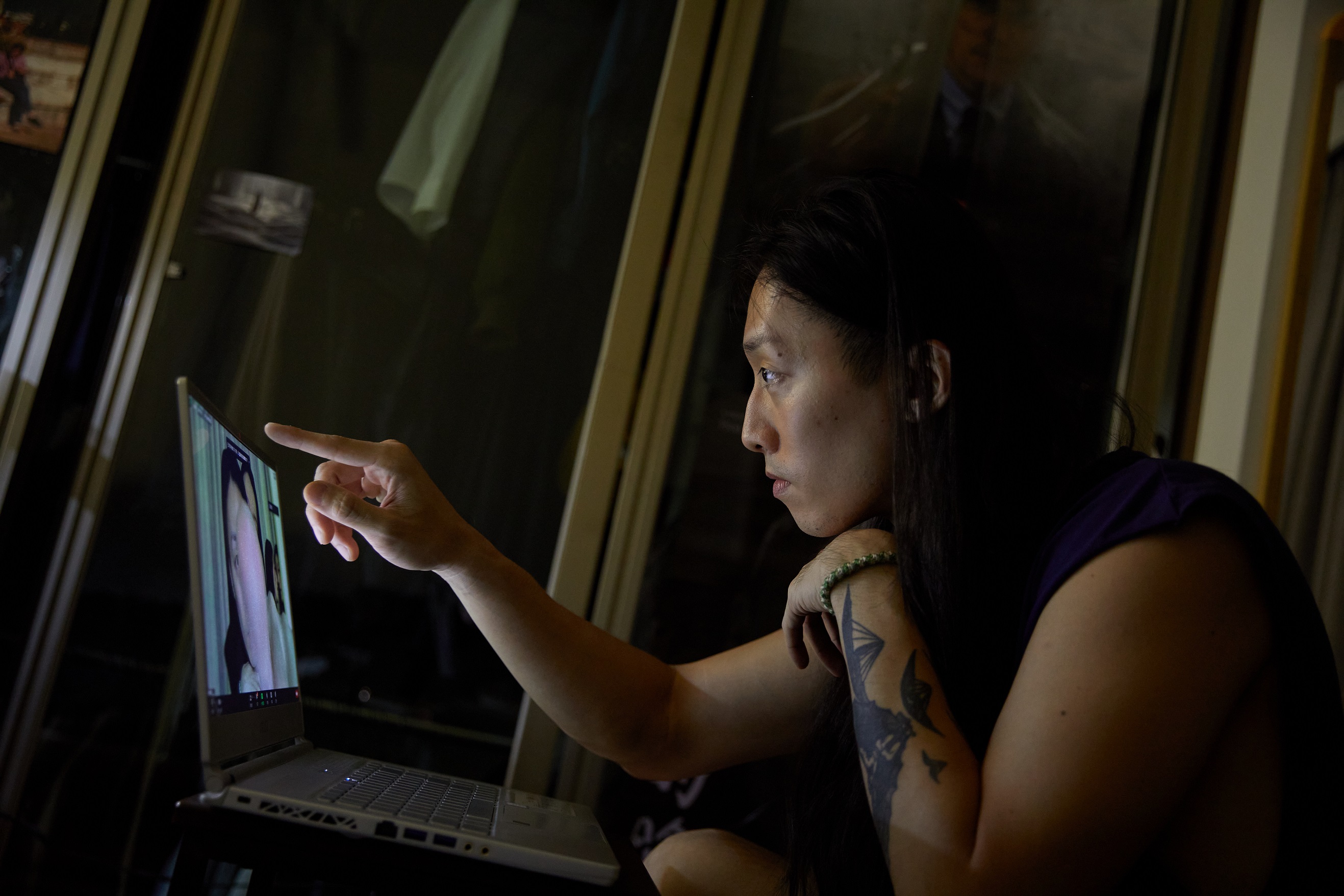
The Rest Under the Pandemic, 2021. (Photo courtesy of: Pin-Rong Chen)
Unlike the first version of The Rest, the actors in The Rest Under the Pandemic play themselves—a group of actors who lost their jobs during the pandemic—instead of their characters in The Rest. Interestingly, it was established that the character of the student who studied abroad flew overseas to escape COVID-19, disappearing from the original cast of The Rest. Instead, the character of a director is added, played not by Ping-Jung but another actor. The director would occasionally make unreasonable demands of the actors, such as asking the Vietnamese migrant worker Chiu Hung to reach through the screen to do a manicure for nightclub hostess Kiki, highlighting the limitations of online performances in a humorous, absurd, and satirical way.
Seven actors, seven locations, fourteen cameras, and fourteen microphones. The versatile online performance required tremendous expertise and all kinds of costs. One can only imagine the hard work that the production team must have put into the show. To record all these details, Ping-Jung built an additional set outside the official performance to record the entire performance process. In the end, the footage and other records of their work were edited into a documentary.
After the team spent all that effort to complete The Rest Under the Pandemic, the pandemic gradually eased and the world truly went "back to normal". Ping-Jung suddenly realized that, from the audience's perspective, watching this performance seems no different from watching a movie on Netflix. Could the essence of "live performance" she cared so much about really be conveyed through video recordings? And how would the painstakingly-crafted The Rest Under the Pandemic be defined by the world after the pandemic subsides? Was it a work of theater or video art? Before the answers of these questions could be found, 2022 rolled around and the world continued to move on, returning to the way things were before the pandemic. In line with this trend, The Rest continued to walk ahead.
3. Return to Theater
In 2022, Pin-Rong returned to Wellspring Theater with The Rest. After the remake of The Rest Under the Pandemic, the Wellspring Theater version kept the flight attendant character. But unlike The Rest Under the Pandemic, in which she was the only character with a job, the universe of The Rest saw her as another one of "the rest", who was laid off after being left physically and mentally drained from flying long hours.
In addition to character changes, this version included a new scene that wasn't in the original. In the scene, a piece of cloth is hung up as all the characters, under the direction of a character, grab an instrument to play, using all their strength to make sounds as if to tell the world "I am here". Regarding this new scene, Ping-Jung explained, "This scene can be summed up in one sentence: 'I can't feel the pain of this piano in front of me'. It means that if people want to live well, it is best not to have too much empathy, because if I have to empathize with other people's emotions and thoughts every day, I won't have time to deal with my own survival. I must objectify the person before me, alienate all their feelings, and expel them from myself in order to survive. This then becomes a situation in which everyone is making noise. The whole world is deafening and everyone longs for someone to listen. These people who are 'the rest', these misfits, will eventually be drowned in this noise. "
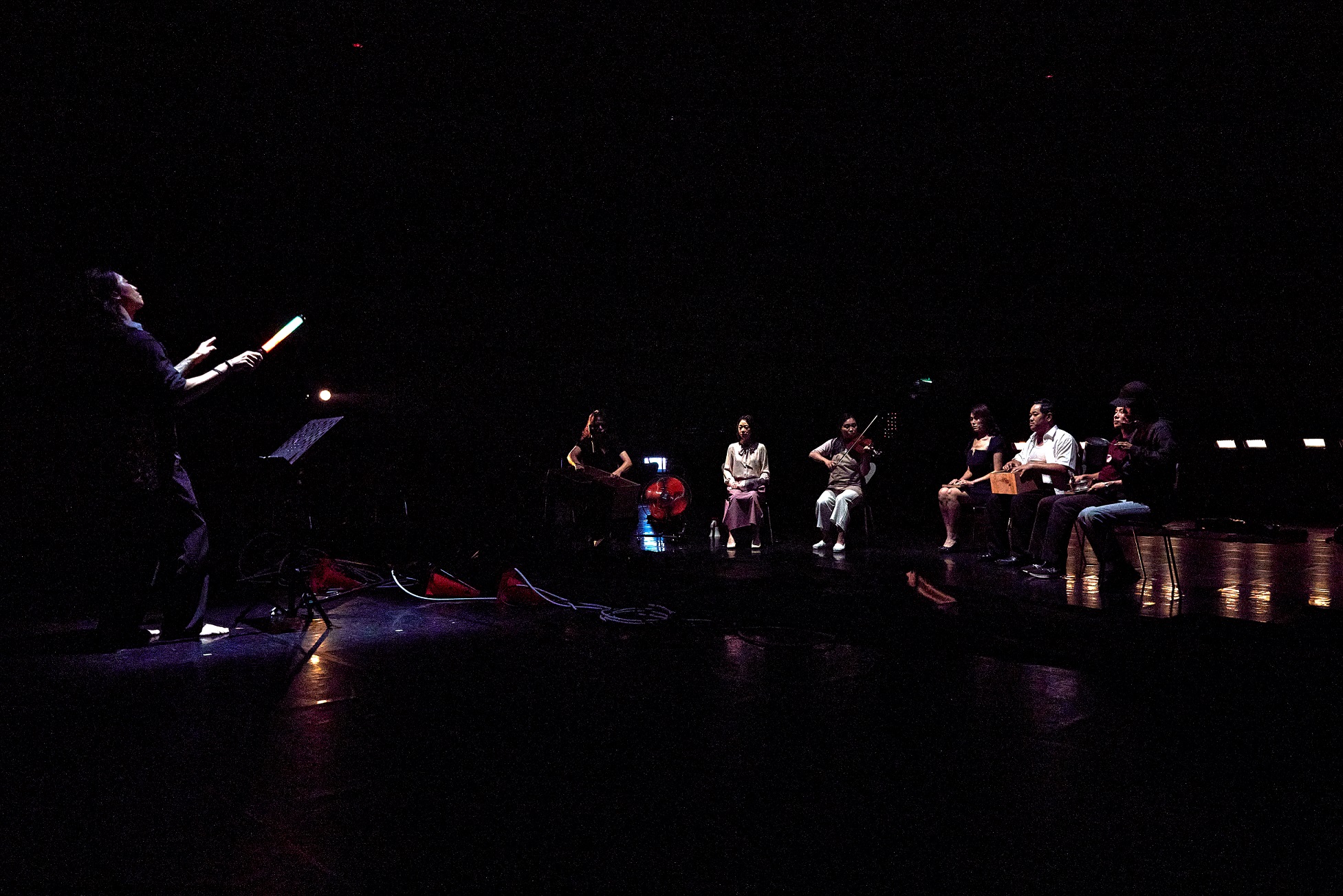
The Rest performed at Wellspring Theater in 2022. (Photo courtesy of: Ping-Jung Chen)
After two years, The Rest returned to the theater. Although venues reopened, the pandemic had yet to subside completely, and there was still the occasional news that a show had to be canceled because a crew member tested positive. At first, Ping-Jung found herself paralyzed by anxiety in this panic-filled atmosphere, worried that fate would throw another curve ball at The Rest and ruin her plans once more. But then, she suddenly realized that the pandemic seemed to be teaching her about the impermanence of life. After accepting that "everything happens for a reason", she gradually allowed herself to relax and accept all the possibilities of fate. With this shift in mindset, everything and everyone gradually fell into place. The Rest finally found light at the end of the COVID-19 tunnel, emerging from its cocoon as a butterfly at Wellspring Theater.
After recalling the process of producing The Rest, Ping-Jung brought up something that happened while they worked on the show: "When I first started working on The Rest, I often passed by a building under construction near my home. The unfinished building still had exposed steel bars. I saw a guard sitting there with only a somber mosquito lamp beside him. During the run of The Rest Under the Pandemic, the interior and exterior of the building were completed. The brand-new facade indicated that it would become an office building. The guard was still there at the time. After completing the production of The Rest at Wellspring Theater, I passed the site again, but the guard was nowhere to be found. I knew that soon there would be a lot of well-dressed people coming and going for work. On a day just like any other, the guard was gone. Where did the guard go? He must have gone somewhere he needed to be, but no one remembers how he once looked after an entire building in the night, submerged by the monotony of life." To Ping-Jung, this small incident felt like the universe was speaking to her, enabling her to use art to reflect reality while also using reality to reflect upon her work. The whereabouts of the guard are unknown, but he is no doubt tumbling like the characters in The Rest, continuing to live his day-to-day life.
Ping-Jung After the Pilgrimage
After the performance, Ping-Jung was finally able to stop and rest. It was then that the sense of "emptiness" buried deep within started seeping out. The tired ruminations after the performance dragged Ping-Jung into a swirl of inner musings, prompting her to think about how she changed with this production.
1. "I'm more accepting of fate now"
Ping-Jung said with a smile, "I used to be someone who, when told to accept fate, would snap back and say, 'I won't leave myself to the hands of fate'." But after the experience of The Rest, seeing how it was supposed to end at the Experimental Theater, only to develop into The Rest Under the Pandemic because of COVID-19, then integrated into the Wellspring Theater version with the original runtime of 53 minutes expanded to over 80 minutes and constant reorganizing and switching of characters, Ping-Jung said the production was like a biomimetic, organic structure, growing wherever needed, breaking away from the path the creator intended time and time again from the get-go. This shifted her mindset on the spectrum of "accepting fate": "I no longer think about what 'I' want to do. I am just the vessel of the production, but the production will find its own path. I am responsible for its final presentation, but there are too many fateful developments throughout the process that have nothing to do with me."
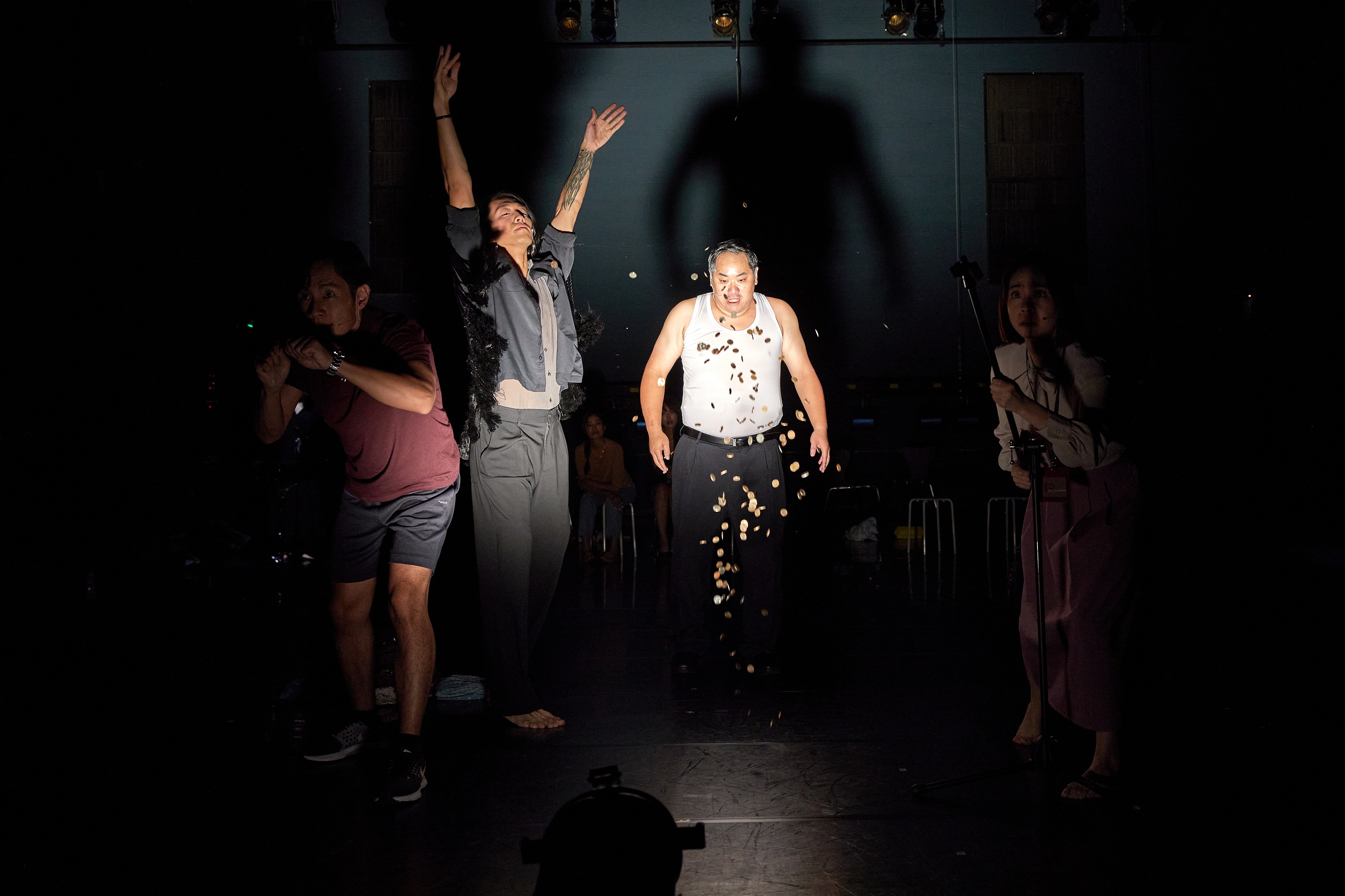
The Rest performed at Wellspring Theater in 2022. (Photo courtesy of: Ping-Jung Chen)
2. The Aftermath (Aftershock)
The three-year journey of The Rest has also made Ping-Jung more aware of how she is very concerned about the "aftermath" of society. The Rest was already intended to discuss how people need to find self-worth in work and achievement under waves of capitalism. Like a twist of magical reality, this "aftermath" seeped into the real world when the COVID-19 pandemic hit. The characters and the actors playing them fell into the same predicament, and they all had to find ways to overcome the great changes brought about by the pandemic.
In addition to the impact of capitalism and the pandemic, Ping-Jung also mentioned how the production was impacted by Walter Benjamin's essay on the "vanishing of the aura". After the Industrial Revolution in the 18th century, the concept of the production line spread to all levels of society, creating a large volume of reproductions, from canned food in supermarkets to the manpower required across different occupations in society. There is nothing and no one that cannot be replaced.
Going back to the creative process of The Rest, the actors who played the roles were as afraid as the characters in the play that the pandemic would make the "liveness" of theater disappear, leading to the end of theater and turning them into "the rest" left behind by the times. When such a coincidence occurred, Ping-Jung realized clearly that her passion for art lies in exploring how people handle the impact of drastic societal changes. In an era when the aura is fading, what value of mankind is left? How do we resist, accept, or ponder such a fate?
How do we approach art now?
After finishing The Rest, Ping-Jung went on to produce more works, including The Paid Off—which was part of the 2021 Green Island Human Rights Art Festival; the 2022 production of the Taiwan International Festival of Arts (TIFA)'s Artificial Hells, for which she was the playwright; and the 2023 R&J and Others commissioned by the National Taichung Theater. Careful observation into the core ideas of these works will show that Ping-Jung is, step by step, establishing a perspective she excels at in the performing arts. When asked what gave her a clearer understanding of her own creative style, Ping-Jung said that the Young Star New Vision grant was a key factor.
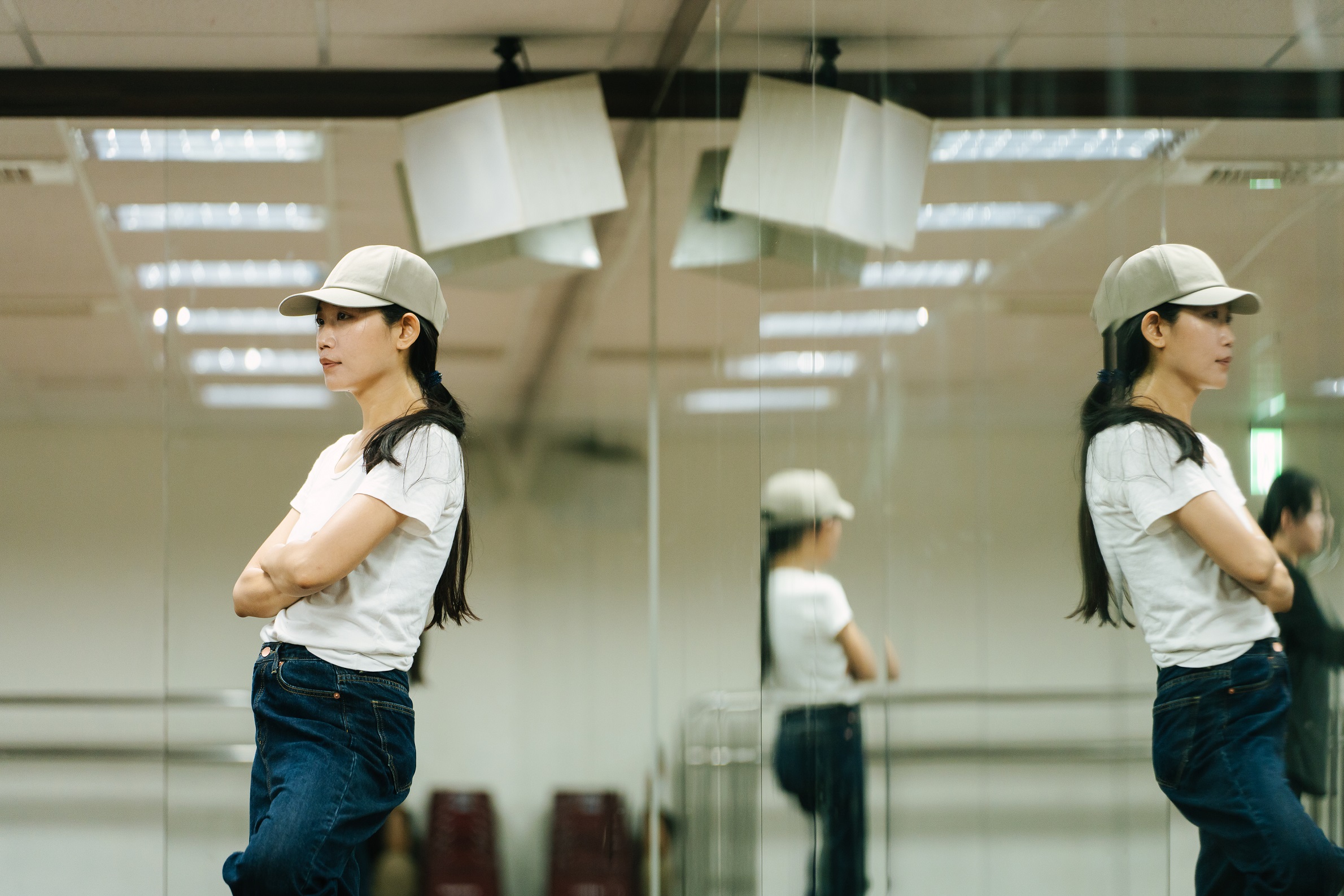
Winner of the 2019 12th Young Star New Vision in Performing Arts grant—Pin-Rong Chen. (Photo courtesy of: Ping-Jung Chen)
The Impact of the Young Star New Vision Grant
Ping-Jung said, "There are all kinds of creators in this world, and each creator has a different path of growth. Some people may know what they want from the beginning, while others take time to explore, to slowly discover their possibilities through creative processes. I am very grateful that the entire process of the Young Star New Vision grant never set restrictions on creators. This process of allowing creators to experiment freely is quite important. I think that creators, at the start, are like random Pokémon, unsure what type they are, whether they are a Psyduck or Blastoise. It takes a long time, after one, two, or even three works, for them to gradually grasp their own creative qualities and understand which type they might belong to. I am lucky to have three runs of The Rest, a single work that allowed me to constantly explore what kind of creator I am."
Another thing about the Young Star New Vision grant that Ping-Jung is grateful for is the feedback system they provide. The production unit will invite critics to watch the performance and write reviews. Although these reviews may not necessarily represent the thoughts of the general audience, they are an opportunity for the creator to examine the work from a different perspective and also help the creator to understand their own creative style.
Also, something about the Young Star New Vision grant that made Ping-Jung grow a lot is the fact that the production must stand the test of the market. Back in school, direction and performance was all she needed to worry about, but on the platform provided by Young Star New Vision, these two things are only a part of the work. While producing content, she also needed to balance budgeting, marketing, and box office income.
Regarding the budget, Ping-Jung reminisced about how budget was rarely a concern at her alma mater, Taipei National University of the Arts: "For a script with six characters, I might have hired twelve actors. At that time, we were all students, so we could run on passion alone. I'll owe them a favor today and pay them back by participating in their next production. Producing a play outside of school, it wasn't until I saw the actual budget form for the first time that I realized I had no idea how much things cost, that a production could easily cost hundreds of thousands. However, theater productions must rely on group effort to stand a chance, and the budget directly determines how far a work can go. Sometimes no one will buy a ticket even if you scrimp and save to put on a show. This is an industry with extremely low chances of breaking even, and even lower chances of making big money. As a result, most theater creators have to rely on the goodwill of the world to survive and keep creating. In addition to government grants, the 'goodwill' also includes the way industry players measure financial return, which is different from the general public's standards. If that's the case, would you keep at it? Yes? Well, that means being ready and having to fight for the goodwill of the world."
Observations on the Creative Environment
The things she learned about budgeting also allowed Ping-Jung to observe the characteristics of Taiwan's creative environment when it comes to the performing arts: "The characteristic of this island nation is that there are no limits and many possibilities. You can see a diverse variety of artistic creations, all blooming and vying for attention at the same time. On the flip side, this makes it hard to consolidate creative energy, and there are too many people for the amount of resources available. I recently read an article in which the writer stated that we have now entered the so-called 'amateur era'. Creators in the amateur era usually have a day job, some waitressing, some serving coffee, some working as teachers. But when creators have to worry about making a living, will they become artists with rich life experiences, or someone who sacrifices the quality of their work for the sake of daily necessities? The answer depends on the person."
So, how should we deal with such an environment? Ping-Jung smiled and said, "It will be like the guard who disappeared after the financial building was completed. The guard went to his next stop, and the people who are supposed to go into the building will go in. I am like a small coin in this building, passing from one person's hand to another, seeing different life stories through their perspectives. In short, I will definitely find a way to keep rolling."
After The Rest?
When asked about her plans for future projects, Ping-Jung seemed at ease as she replied: "After finishing The Rest, I felt that this could be the end of my creative career. But when I returned to the theater to watch and direct plays, I felt that I still love this place. I now feel that, when it's time to create, the flow of life will naturally bring you to the surface, and now I am on the surface, telling others, 'Hey, I'm here'. As long as I continue to love theater, my life will take me back to this place again and again."
Perhaps like how The Rest was born in the theater, forced out of the theater due to the pandemic, but returned to theater in the end, Ping-Jung's pilgrimage in theater will always take her back to her favorite place: a theater full of infinite possibilities.
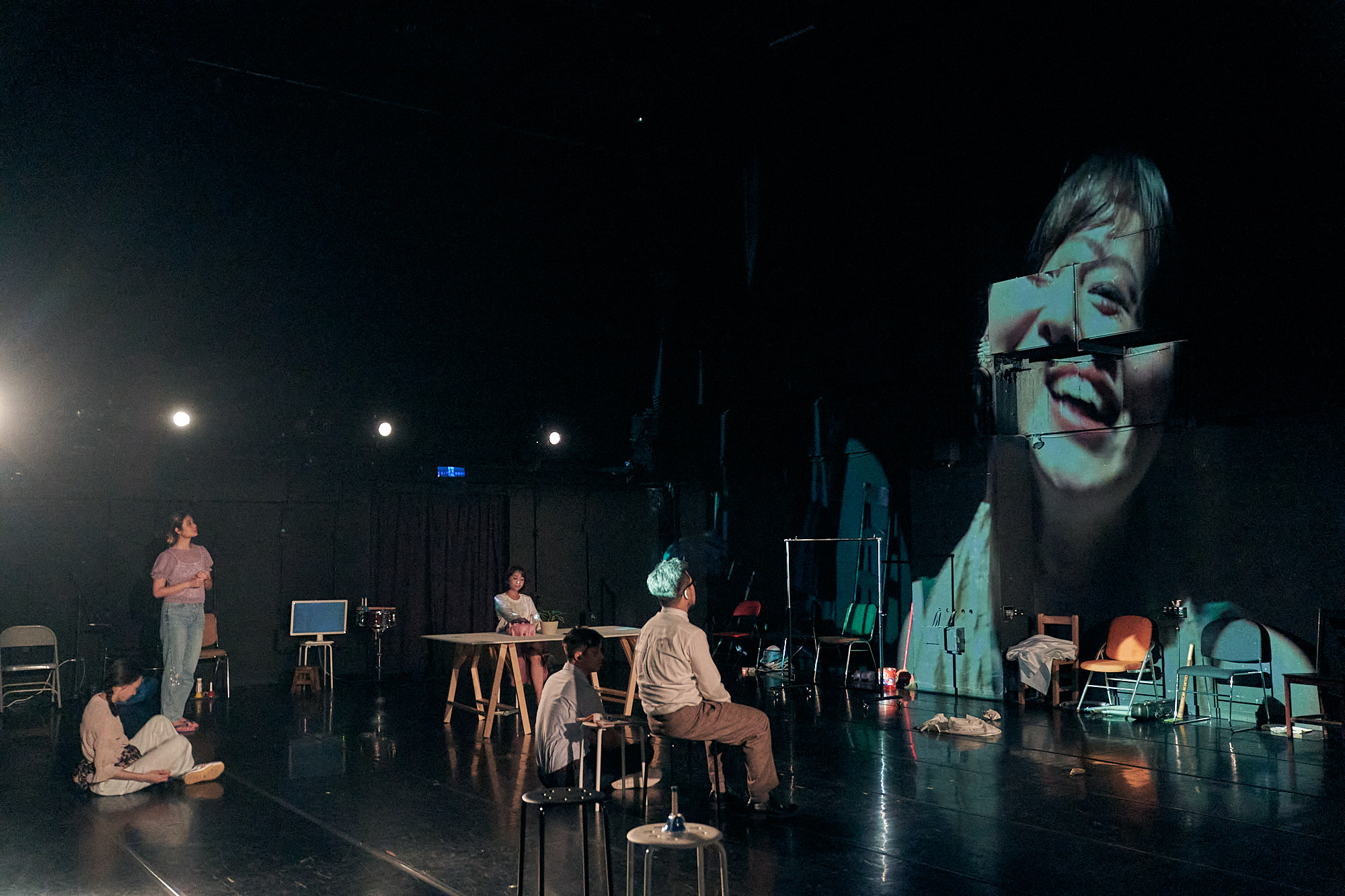
The Rest was performed at NTCH's Experimental Theater in 2020. (Photo courtesy of: Ping-JungChen)
*Translator: Linguitronics
More CASE STUDY
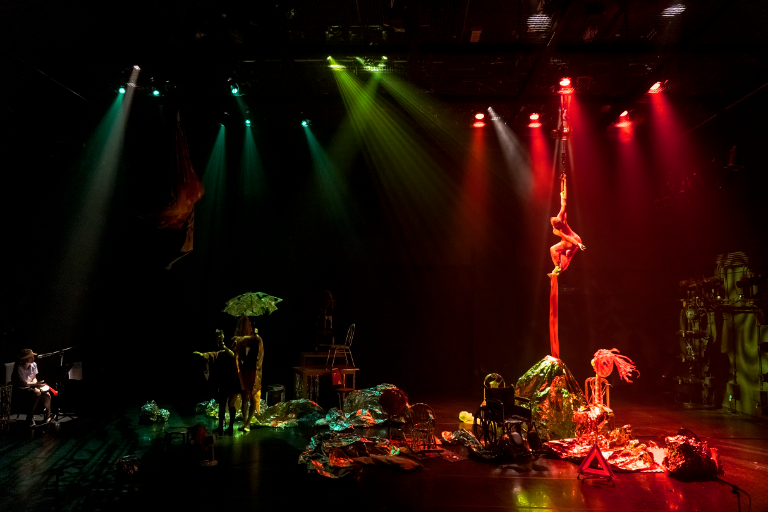
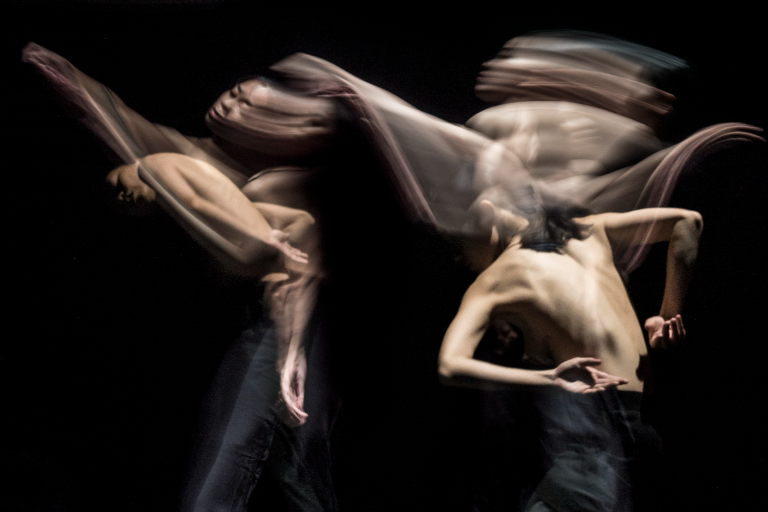

_1736490377300.jpg)